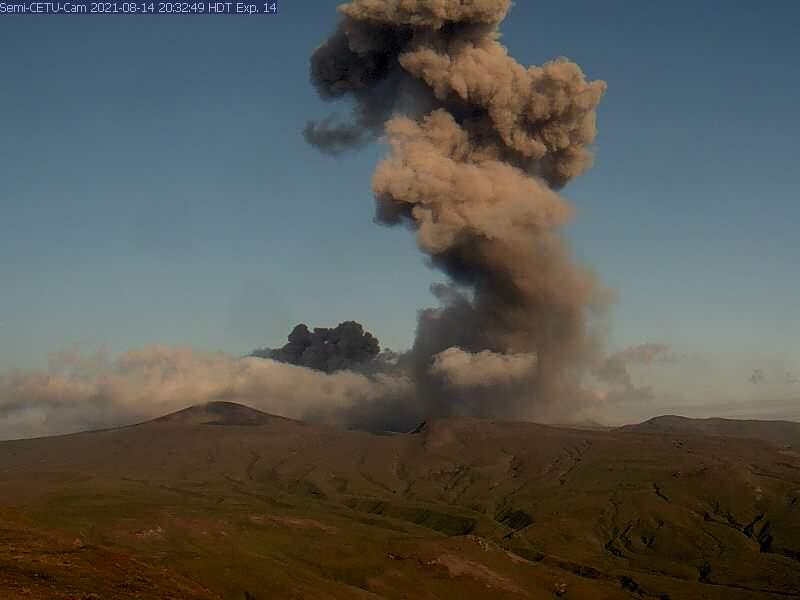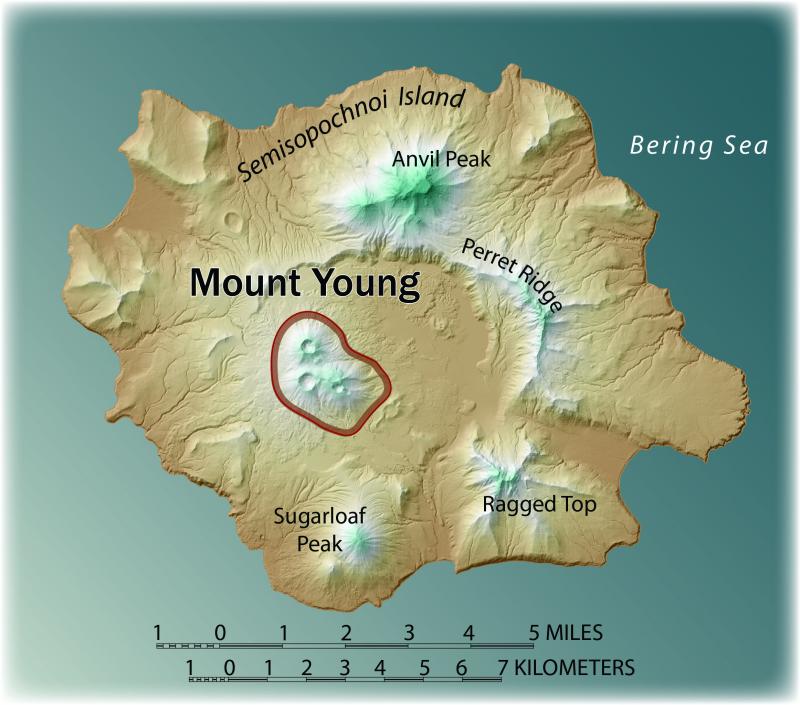Currently active Mount Cerberus volcano now named Mount Young
With passage of the Don Young Recognition Act into law, Mount Cerberus, on remote Semisopochnoi Island in the western Aleutian Islands, is known officially hereafter as Mount Young. It is one of several volcanic features that make up the Semisopochnoi volcanic group. The north crater of Mount Young has been intermittently active since 2018, making it the most active volcano in Alaska over the last several years.
The volcano is 160 miles west of Adak, the nearest community, and more than 1100 miles from Anchorage. The main hazard from eruptions of Mount Young is airborne ash, which can be hazardous to overflying aircraft and passing mariners. Semisopochnoi Island is uninhabited and part of the US Fish and Wildlife Service Alaska Maritime National Wildlife Refuge.

What’s in a name?
Semisopochnoi is a descriptive name derived from the Russian words “sem,” meaning “seven,” and “sopochka,” meaning “extinct volcano.” It was first used by G.A. Sarichev in 1826. Semisopochnoi Island is called "Uniyax" by the local indigenous Unangan people. Mount Cerberus was so named in 1935 by a U.S. Navy Survey Expedition "because the three connected summits comprising the volcano are analogous to the three-headed dog of Greek mythology, the guardian of the entrance to the underworld."
A different Mount Cerberus, also a volcano, is located in the Katmai volcanic cluster in Katmai National Park and Preserve on the Alaska Peninsula. It was named in 1917 by R. F. Griggs of the National Geographic Society "descriptive of this mountain as being the (three-headed) watchdog guarding Hades (Valley of the Ten Thousand Smokes)."
With the renaming, Alaska is now home to a single Mount Cerberus.
The Don Young Recognition Act
The Act honors the legacy of the late Don Young, Alaskan Congressman and the Dean of the U.S. House of Representatives, who passed away in March 2022 after serving in the House for 49 years. In addition to Mount Young, the Act serves to rename the federal office building in Fairbanks as the Don Young Federal Office Building and the Job Corps Center located in Palmer as the Don Young Alaska Job Corps Center.
A state-of-the-art volcano monitoring network
Despite its remote location, Mount Young is monitored by a network of sensors including six seismometers, two web cameras, and three infrasound sensors on Semisopochnoi Island. Data from these instruments are telemetered in real-time to Amchitka Island to the south, and from there using a satellite uplink to the offices of the Alaska Volcano Observatory. This network allows AVO scientists to keep a close eye on unrest there, and to provide rapid warnings about renewed activity.
In our formal information products, AVO assigns Alert Levels and Aviation Color Codes to the Semisopochnoi volcanic group rather than individual volcanoes on Semisopochnoi (such as Mount Young). We will refer to Mount Young in our descriptions of activity as appropriate, but you will continue to see Semisopochnoi referred to most often.
To learn more:
For more information about Geographic Names, visit the USGS Geographic Names Information System
To learn more about the volcanoes of Semisopochnoi Island, including Mount Young, and to view monitoring data for Mount Young, visit the Alaska Volcano Observatory’s Semisopochnoi page: Semisopochnoi page